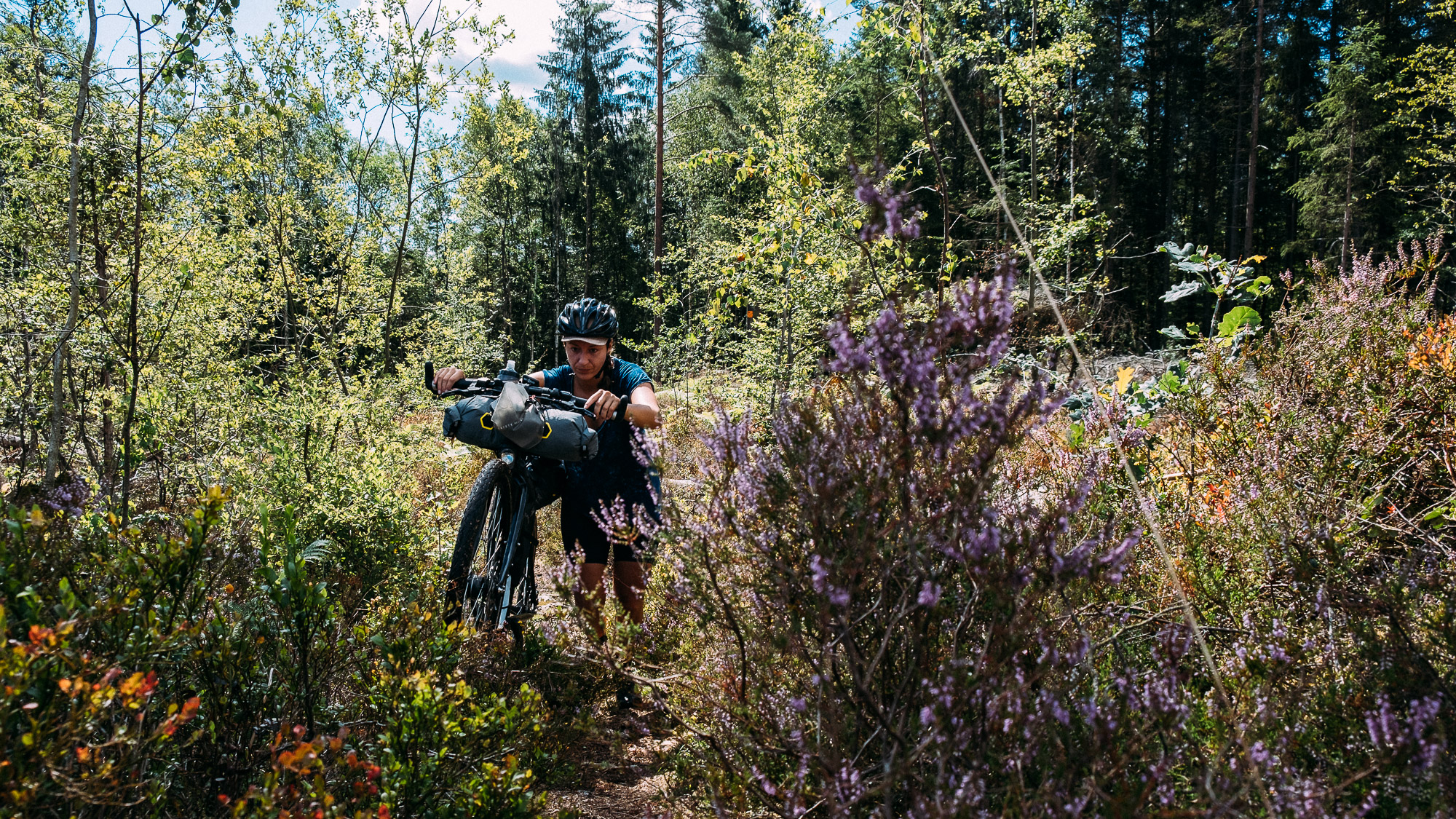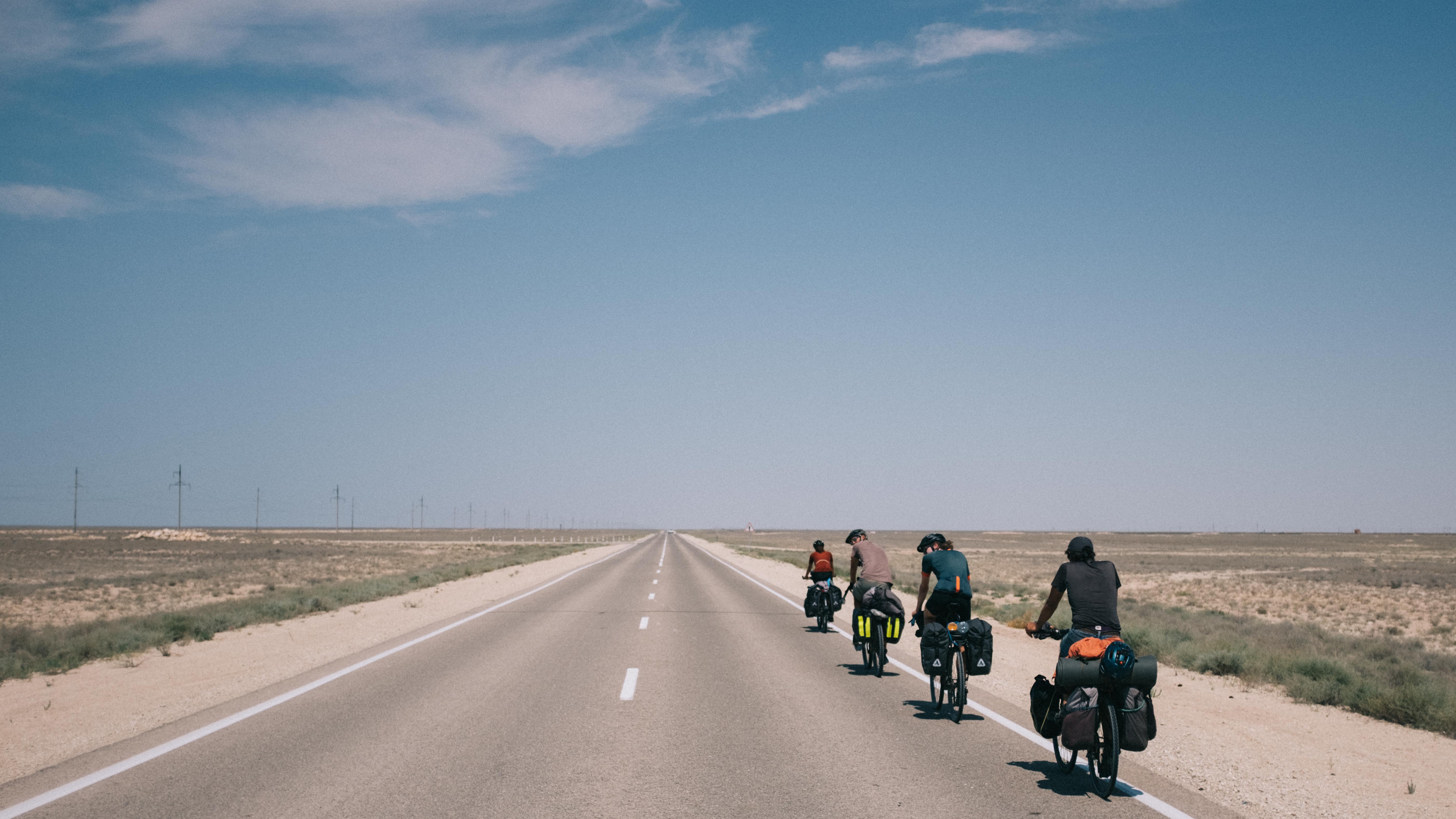Swedish Bikepacking Routes – The Blekingeleden
It was time to discover a different corner of south Sweden, the province of Blekinge. Adventure was calling. Eager to hit the trails we stuffed our gear into our bikepacking bags and loaded our Wahoo’s with the gpx-file. Right from the start, we realized this wasn’t going to be a relaxing bikepacking adventure. This was full on adventure cycling.
In this first report of our favorite Swedish Bikepacking Routes, we’ll tell you about the Blekingeleden. A story about our own experience, with some practical tips and additional information. At the bottom of the page you’ll find the route in komoot.



Blekingeleden
The Blekingeleden (leden means trail in Swedish) is a stunning trail that offers a varied surface along paths and gravel roads. Cutting through forests, pastures, lakes and fields. We set off from medieval town Sölvesborg in the west of Blekinge. The trail led us all the way to Bröms, in the most north-eastern tip of the province.
Blekinge Is a very unique place with its stunning archipelago, that boasts over 800 islands. The archipelago with granite coastlines is even designated as a UNESCO Biosphere Reserve. Shallow bays, lagoons, and estuaries along the coast creates an amazing backdrop, and left us in awe at all the breathtaking view points. We meandered through the seaside region, but also through rolling hills and hardwood forests. We picked berries in the untamed wild forests, crossed blossoming hayfields and camped in the lush oak tree pastures.



Blekingeleden route
The Blekingeleden covers a total distance of nearly 270 kilometers. The route includes roughly 2.200 meters of altitude gain. Although the statistics do not sound that bad, completing the route was a hard and challenging task. We were taken by surprise by the difficulty level after only just having covered a handful of kilometers from the starting point.
Since the Blekingeleden is designed as a hiking trail, we had to conquer technical trails, demanding surfaces and lots of obstacles. From the start the trail followed a gentle gravel road through the outskirts of Sölvesborg. But it didn’t take long before the terrain got quite difficult. Roots sticking out from the soil and slippery rocks covered in moss forced us to spend more time walking and pushing our bikes than wanted.





Obstacles along the way
Of all obstacles cattle grids are the easiest to cross. But Swedish farmers have other tricks up their sleeve to prevent livestock from trespassing, and us cyclists too. Expect ladder stiles, barbed wire, rambler gates, barrier gates and the good old electric fence. Every now and then two of the methodes are combined, just to add to the challenge. And for those who wonder, yes we got electrocuted lifting the bike over a charged stile.


The right bike
Another obstacle on Swedish trails are wooden decks. Often used to protect fragile nature or covering swaps. If you’re lucky, you’ll cross and reach the other side without wet socks. Cycling over the decks is oftentimes not possible, since the shelfs are as wide as your shoe and the gap between them a lot wider than our tires. We met a local mountainbiker on a full-suspension bike on the trail. He was riding it in different legs from his home town nearby. But even with just a small backpack, he too, was forced to walk parts of the trail. Next time we would probably choose a much wider tire to help deal with the humps and bumps.
How hard can it be?
To put things into perspective, around 70% of the route is rideable. The rest is pretty difficult singletrack. The first half of the Blekingeleden is the hardest. The second half is easier with long, flattish gravel double-tracks. It is possible to by-pass some of the hiking trails, adding a few percentages to the ride ability. More than 70% is unpaved. With a good fitness level and decent riding skills you’re likely to cover between 50 and 75 kilometer a day. This gives you some time for coffee and photo breaks. Navigation is child’s play. You just follow the orange sings.



Sights along the ride
One of our favorite highlights along the trail, is the nature reserve Järnavik. The coastal landscape with steep hills and deep ravines offers grand views. The trail took us even on top of the stone cliffs. We spend the night in the windshelter close to the camping of Järnavik, overlooking the archipelago, with its fjords. Here you can take a swim in the Baltic Sea. This was definitely not the only place we took a dip. Sweden is home to many fresh water lakes, over 100 000 lakes to be more precise. Nothing beats a swim after a long day in the saddle on a summer day. The trail also leads along the lakes Halen, Långasjön and Norr Öllesjön.



Five star windshelters
We didn’t see many hotels and lodges near the trail. Luckily camping is super easy, like anywhere else in Sweden. The Swedish right of public access gives access to freely roam around (and sleep!) in nature. Pitch your tent anywhere you like or sleep in a windshelter. There is an extensive network of vindskydds along the trail. These shelters are very basic structures, but offer perfect protection from the elements. Light a camp fire in the designated fire pit with the provided fire wood and grill your sausages and marshmallows before you nestle into your sleeping bag.




Food & water
Make sure to bring enough food for the ride. Although the Blekingetrail leads through many small settlements, shops to stock up are scarce. Especially for the last part, it can take you up to two days before you reach a town to restock on supplies. You can find supermarkets in the towns Olofström, Svängsta (little detour needed), Järnavik (small camping store), Ronneby and Kristianopel. Swedes aren’t very open and talkative at first, but don’t hesitate to ask for water or directions. They are usually happy to help. Almost every Swede speaks perfect English.





Logistics
The starting point is located close to the train station of Sölvesborg. You can take your bicycle for free on the local trains. Getting back from the finish is a little more complicated. The easiest way to come back is to cycle to Karlskrona and jump on the train. Both stations are on the Öresundståg connection with Malmö and Copenhagen (you pay a fee for your bike over the bridge). From Malmö central it only takes 1,5 hour to reach the start. If coming from Copenhagen, add another 20 minutes.
Best time
The best time to cycle (or hike) the Blekingeleden is between May and September. August and September are the warmest months. By now the water temperature of the ocean and lakes are at its warmest. This is also berry picking season. Cycle here in fall and even winter, if you’re not scared of the cold. Winters in the south of Sweden are relatively mild.

We found Blekinge with the archipelago and glittering lakes spectacular. It’s often referred as being the southernmost wilderness of Sweden, and we can see why. It has all the ingredients for an amazing bikepacking adventure. But Sweden has many more trails and gravel roads to discover, we can’t wait!
Follow all our adventures on Instagram.





1 Comment
Join the discussion and tell us your opinion.
Hello! Just discovered your site and hope you’re coping ok with current travel restrictions. I’ve especially enjoyed your Silk Road posts, as that part of the world was on my wishlist prior to covid.
I run a bike travel directory called BikeSleepBike, and I’ve added a link to this post and some others on your site so others might find them as resources. Hope that’s alright with you! Feel free to get in touch with any questions about the project, and best wishes for riding in the future.